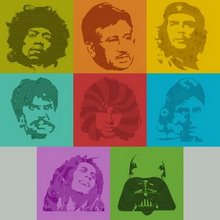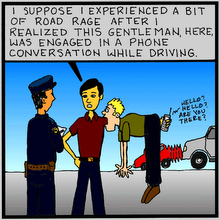I am now ob serving at Tryst, a local DC coffee house and that is equal parts funk, hip and cool. In many ways Tryst embodies the elements of pop-culture. It is a fertile meeting ground of those seeking a hip, chic modern coffee shop that serves as much coffee as it does access to how we have come to appropriate meaning on spaces within our culture and what that says about the popular habits and customs that arise from such meanings.
In the area where I am sitting, a cul-de-sac of couches, there are four people working on iBook’s. Each is of the MacBook variety (defined by its white casing), which is the most commonly seen computer in public spaces. Sleek, easily accessible, utilitarian in nature and captivating in their minimalism, iBook’s are a powerful testament to the power of cool in our society. It is most certainly cool to have an iMac and even cooler to be seen with one. This particular night there are 17 people working on computers out of a total of 48 in Tryst, and of those13 are working on iMac’s. Most people were actively engaged in whatever work they were doing on their computer, but several, including a few in the area where I was observing were using them for other purposes, mainly listening to music and to occupy an otherwise empty seat on a couch. And this brings up an interesting question: when did computers become an item of necessity at coffee shops? Is it because computers present a more advanced method by which to write? Have the social implications of going to the coffee shop changed? Or is it that the very nature of the “coffee shop” itself has changed? I, by no means have the answers, but in observing the ways people use computers it becomes clear that a different and new dynamic exists. .
This much is evident in my circle. To my left sits a woman who is not only working on her iBook, but also talking on the phone. I can discern that she is either fighting with her boyfriend, or relating her current angst with work. Her conversation lasts for about eight minutes, and immediately after hanging up proceeds to put on her headphones and set back working on her computer as if nothing happened. Her facial expression suggests otherwise, though. Traditionalists decry the use of cell-phones in public, and the question of why people feel the need to make their private conversations public is certainly valid, but the use of cell-phones attests more to the evolving relationship patrons share with their favorite coffee joint, and to the ways in which those spaces are being appropriated.
To her right is another woman speaking on her phone. This conversation is dramatically lighter than the other, but annoying enough that several people shoot stares of consternation. Well understood. Nevertheless she cheerfully chats as she cuts out what appear to be nametags out of a stack several inches high. What was the communal coffee table has become her personal office.
In our circle are four other people engaged in two separate conversations. One between two younger women, recently out of school, and catching up for the first time in some months; the other between a woman in her late twenties and a gentleman in his early thirties, who met only recently as she volunteered her cell phone to take a picture of his oversized cappuccino- it will be his wall paper he tells her and she volunteers to text the picture in what seems to be her attempt to strike up a conversation, she has been eyeing since he arrived five or so minutes prior. They take several pictures and shift into the type of conversation that might occur when people meet in this type of social setting, easy, laid back and causal. They discuss mostly their travels and she inches closer and closer, until only her laptop separates them, at which point she shows him some pictures she has recently uploaded. They talk for about 30 minutes and then she departs and he stares around with a look of one who knows he’s just tapped into some rich oil. He then commences to read a book on learning behaviors.
The two younger lady’s chat and catch up- their jobs, their boyfriends, what life after college is like, their common friends- and are the only people not using any sort of technology. As much as a coffee shop is a place where one goes to catch up and have a conversation with a friend, or a place to studying in some relative peace, or to read the paper, or to do work, or to meet people, it is a place where people feel free to articulate a vision of how they interact with what is assuredly an odd, but useful cultural prism. How the various people in my circle have decided to utilize the space is of their own choosing, yet there is an implicit understanding amongst all patrons that this is how the space functions: open and free, but bound in manner, yet always evolving to reflect the life and times of our culture. This night a Tryst said as much.



